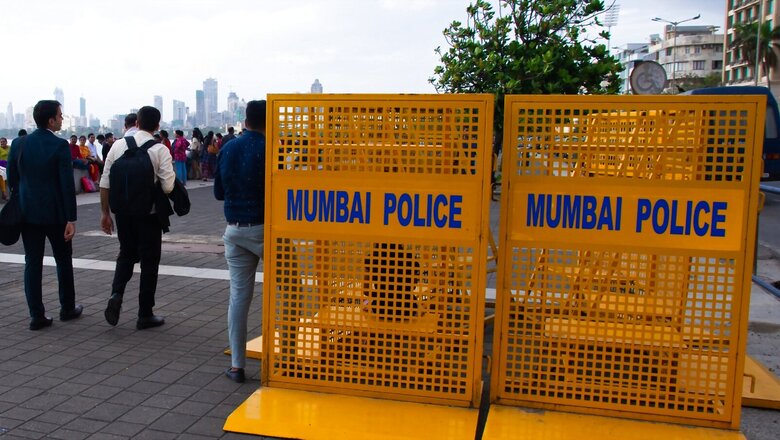
views
An increasing number of cyber crimes as well as law and order issues call for a strong and efficient policing. Technology is a powerful tool that can help police forces understand and combat such crimes more efficiently.
Globally, law enforcement agencies are leveraging the potential application of smart technologies to build and maintain safe communities. Dubai introduced its first robot police officer, RoboCop, in 2017. People can report crimes effortlessly through its in-built touchscreen. While some fear technology will replace humans, smart policing is all about strengthening the existing force and ecosystem. It represents a combined strategic approach of developing physical infrastructure and adopting technology, thus bringing more science in police operations.
In India, the SMART policing plan was introduced by Prime Minister Narendra Modi at a conference of DGPs of state and central police organisations in Guwahati in 2014. Annually, the ranking of police stations is done by the Ministry of Home Affairs (MHA). The police stations are evaluated on the basis of various parameters like crime rate, infrastructure and delivery of public service, among others.
With the rapid pace of technological developments, police and investigation agencies are finding new ways to leverage innovative tools to enhance public safety, catch criminals and save lives. Technologies to prevent crime include sophisticated drones, artificial intelligence, global positioning systems (GPS) and CCTVs. These cover a wide range of applications in different contexts. Mapping technologies use real-time information to assess where crimes are happening. Police can identify hotspots and patterns of activity, allowing them to focus on current investigations and even prevent crime.
Artificial Intelligence
Smart policing requires adept and efficient data usage and information resources. Going beyond traditional police information resources, it uses police intelligence as well as data from various sources.
The ongoing expansion of the Internet of Things (IoT) is enabling effective big data collection to enhance predictive and responsive approaches for evidence-based policing. In recent decades, crime-related data from sources such as CCTVs, social media, police calls and crime reports are being collected and stored. Smart sensors provide a stream of valuable raw data including locations, sounds, imaging and videos. Predictive crime software uses artificial intelligence to process huge amounts of data, enabling detailed analytics and thoroughness in police investigations.
Data-Driven Approach
Data-Driven Approach to Crime and Traffic Safety or DDACTS is a method to integrate traffic crash and crime data to map out efficient patrol routes, thus ensuring better traffic enforcement and better allocation of resources. According to a 2019 Cross-national Study of the Effectiveness of DDACTS, although this model has decreased the crime and crash rates in the US, it is necessary to thoroughly study its effects before applying it in another country. Factors influencing crime, crashes and police patrol systems in the US can differ significantly from those in Asia.
3D Laser Tech
In movies, the police often need to revisit the scene of the crime multiple times. In reality, 3D laser tech measures the dimensions of the crime scene, at a speed of up to tens of thousands of points every second, and uses it to create a 3D model of the crime scene. This allows police to interrogate the crime scene multiple times without having to visit the place physically.
Drone Technology
Drone technology is a cheaper alternative to helicopters in police investigation. They undertake activities like surveillance, search and rescue, crowd monitoring and crime scene analysis. Drones are also incredibly useful in managing traffic in crowded cities.
Indian law enforcement agencies have been increasingly relying on drone technology for monitoring during COVID-19 lockdowns. Even after the suspension of lockdowns, the use of drones in a monitoring role has continued in some cities.
Biometrics
Police have been using fingerprints to identify lawbreakers for more than a century. Today, in addition to facial recognition and DNA, biometric characteristics are being utilised by law enforcement agencies for voice recognition, iris recognition, gait analysis and even heartbeat.
Facial Recognition Technology
The use of digital cameras by police started in the late 1990s. CCTVs were installed on roads to detect traffic regulation violations, notably speeding. Recently, Lucknow Police started deploying cameras with facial recognition technology to detect the expressions of women in distress, under the Uttar Pradesh government’s Mission Shakti programme. Although the use of facial recognition software is deemed controversial, the goal of this emerging technology is to improve safety and prevent crime.
The Way Forward
As India makes rapid advances towards becoming an economic superpower, our police cannot continue to remain frozen in time. Traditional and linear devices used in the past are insufficient today. We are beginning to understand the potential of technology in enabling smarter policing. Countries around the world are at different stages of deploying technology for law enforcement.
India needs legal frameworks to determine how stakeholders in the present smart policing system should be storing and using data. Advancement in science and technology research as well as strategic funding are significant to build safe communities. Smart policing will benefit an entire community, help cut costs and improve existing systems in combating crime.
The author is CEO and co-founder of Integration Wizards Solutions. The views expressed in this article are those of the author and do not represent the stand of this publication.
Read all the Latest Opinions here




















Comments
0 comment